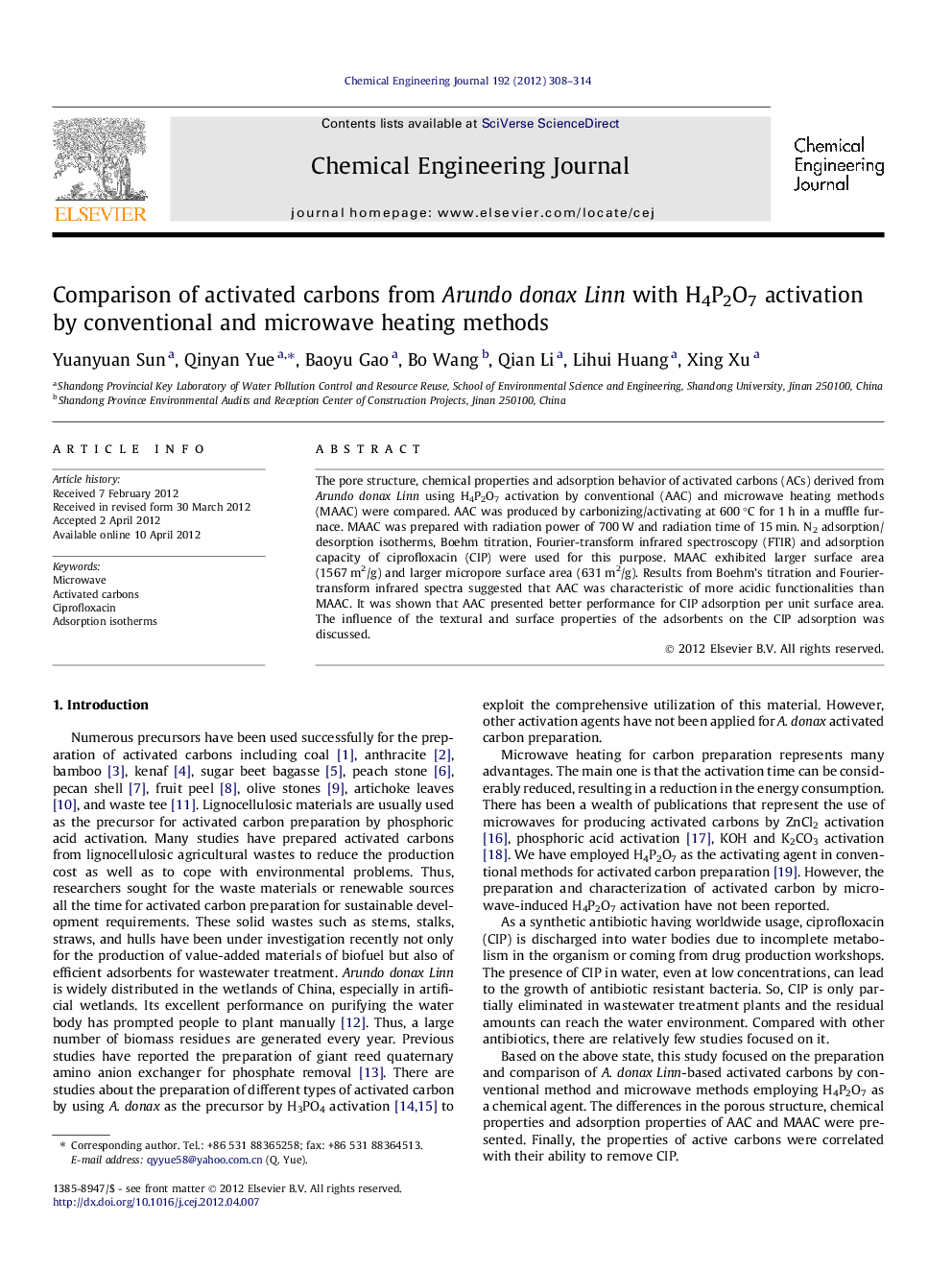| Article ID | Journal | Published Year | Pages | File Type |
|---|---|---|---|---|
| 149823 | Chemical Engineering Journal | 2012 | 7 Pages |
The pore structure, chemical properties and adsorption behavior of activated carbons (ACs) derived from Arundo donax Linn using H4P2O7 activation by conventional (AAC) and microwave heating methods (MAAC) were compared. AAC was produced by carbonizing/activating at 600 °C for 1 h in a muffle furnace. MAAC was prepared with radiation power of 700 W and radiation time of 15 min. N2 adsorption/desorption isotherms, Boehm titration, Fourier-transform infrared spectroscopy (FTIR) and adsorption capacity of ciprofloxacin (CIP) were used for this purpose. MAAC exhibited larger surface area (1567 m2/g) and larger micropore surface area (631 m2/g). Results from Boehm’s titration and Fourier-transform infrared spectra suggested that AAC was characteristic of more acidic functionalities than MAAC. It was shown that AAC presented better performance for CIP adsorption per unit surface area. The influence of the textural and surface properties of the adsorbents on the CIP adsorption was discussed.
► Arundo donax Linn activated carbon was prepared with H4P2O7 activation. ► Microwave input power of 700 W and irradiation time of 15 min was used for activation. ► Conventional heating was used to prepare Arundo donax Linn-based activated carbon. ► The different properties between these two kinds of carbons were compared.
